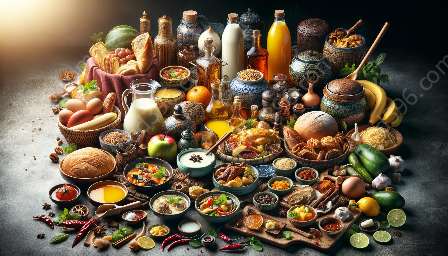Scandinavian food culture is a delightful tapestry of culinary traditions, reflecting the rich history and diverse landscapes of the region. With distinct regional variations, each country in Scandinavia boasts its own unique twists on traditional dishes, reflecting the local ingredients and cultural influences. From Sweden's hearty meatballs to Denmark's open sandwiches and Finland's smoked fish, exploring the regional variations in Scandinavian food culture promises a journey of discovery and delight.
Scandinavian Food Culture: A Historical Tapestry
The food culture of Scandinavia is deeply intertwined with the region's history and geography. The harsh climate and limited arable land have historically influenced the ingredients and cooking methods prevalent in the region. Traditional Scandinavian cuisine often revolves around preserving food, such as through fermentation, smoking, and pickling, allowing the locals to make the most of the limited growing season. The culinary heritage of the Vikings, who roamed and traded across the region, has also left a lasting imprint on Scandinavian food culture.
Regional Variations in Scandinavia
Each country in Scandinavia boasts its own unique culinary traditions, shaped by the local landscapes, cultural influences, and historical developments. Let's delve into the regional variations that define the distinct flavors of Scandinavia:
Sweden
Swedish cuisine is renowned for its use of fresh and locally-sourced ingredients. From the iconic Swedish meatballs served with lingonberry sauce to the comforting warmth of cinnamon buns, Sweden's food culture embodies a perfect balance of hearty and sweet flavors. Regional specialties such as surströmming (fermented herring) and kåldolmar (stuffed cabbage rolls) further showcase the diversity of Swedish cuisine.
Norway
Norwegian cuisine is heavily influenced by the country's coastal geography. With an abundance of fresh seafood, including salmon, herring, and cod, Norway's culinary delights often revolve around the ocean's bounty. Traditional dishes like rakfisk (fermented trout) and fårikål (mutton and cabbage stew) offer a glimpse into the authentic flavors of Norway.
Denmark
Denmark's food culture is celebrated for its open sandwiches, known as smørrebrød, which feature a variety of toppings ranging from pickled herring to roast beef. The Danish love for pastries shines through in treats like wienerbrød (Danish pastries) and kransekage (almond cake). With a penchant for cozy hygge gatherings, Denmark's culinary traditions emphasize comfort and conviviality.
Finland
Finland's food culture is defined by its use of wild ingredients and hearty, warming dishes. The Finnish love for foraging inspires dishes like sautéed mushrooms and berry-filled pastries. Smoked fish, such as salmon and herring, holds a special place in Finnish gastronomy, reflecting the country's deep connection to its pristine nature.
Exploring the Intersection of Food Culture and History
The history of Scandinavia is intricately interwoven with its food culture, reflecting the resilience, resourcefulness, and creativity of the Nordic people. From the ancient Viking feasts to the modern embrace of sustainable and organic practices, the evolution of Scandinavian food culture mirrors the region's journey through time. Today, a renewed emphasis on traditional techniques, such as baking bread in wood-fired ovens and preserving foods through natural fermentation, highlights the deep-rooted connection to the land and the sea.
The Future of Scandinavian Food Culture
As Scandinavia continues to embrace its culinary heritage while innovating with new flavors and techniques, the region's food culture stands poised to captivate and inspire global audiences. With a growing emphasis on sustainability, locally-sourced ingredients, and authentic experiences, Scandinavian cuisine promises a continued celebration of the region's unique flavors, traditions, and regional variations.

